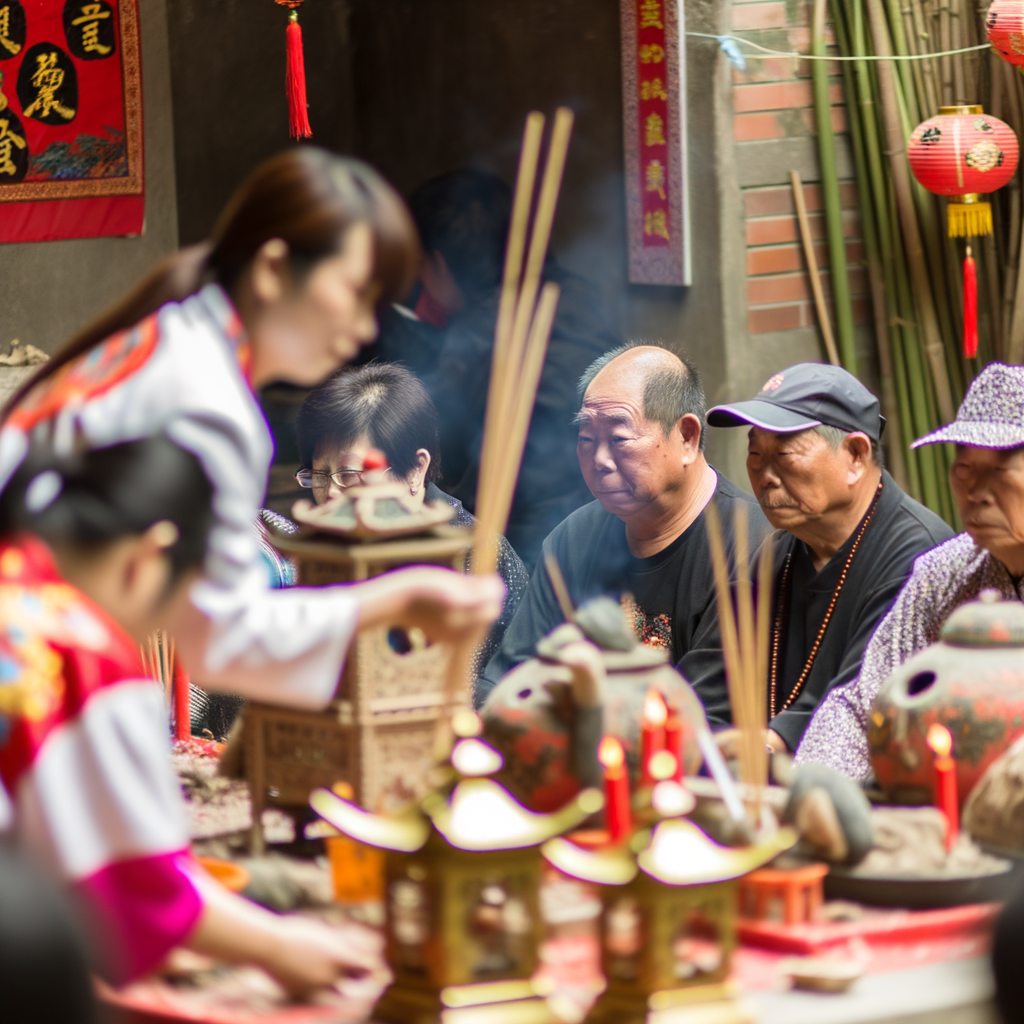Honoring the Past, Comforting the Present
Grief is a universal experience, yet how we move through its waves is often shaped by the stories, customs, and rituals of the cultures we inhabit. In Taiwan, where ancient traditions coexist with modern life, the passing of a loved one invites a community into a sacred rhythm—a dance between life and death that is both intimate and expansive.
When I reflect on Taiwanese death rituals, I’m struck by their intentionality. These are not hurried, discreet affairs. Instead, they stretch across days, weeks, and sometimes years, weaving memory into the fabric of the living. Each act—from the gentle whisper of incense smoke to the collective hush of mourners—becomes an invitation to honor both the one who has passed and those left behind.
For those outside of East Asian traditions, these practices may feel unfamiliar, perhaps even distant. Yet beneath the surface, they carry threads that resonate with the Western longing for connection, legacy, and meaning in the face of loss.
Preparing the Soul’s Journey: Guiding the Spirit Home
In Taiwan, as soon as a loved one passes, there is a tender urgency to help guide the spirit (靈魂 / línghún) safely from this world to the next. The body is prepared with care, dressed in symbolic garments, and laid in a coffin. Relatives may choose burial or cremation, but before either, the deceased is surrounded by light and scent.
Incense is burned continuously beside the body. The scent of sandalwood or lotus rises, believed to calm the spirit and create a bridge between the human and the divine. In the hush of these moments, I’ve seen families gather close, their whispered prayers carrying both grief and love.
In some homes, a monk or Taoist priest recites sutras, chanting ancient words that offer solace and protection. The cadence of these chants, repetitive and melodic, reminds me of the hymns sung in Western funerals—different in form, yet similarly grounding.
The Seventh Day: When Spirits Return Home
One of the most poignant practices is “頭七” (tóu qī)—the belief that on the seventh day after death, the spirit returns home one last time.
Doors are left ajar. A simple table is set with the deceased’s favorite dishes, tea, and a pair of chopsticks. A candle flickers softly beside the meal, and in the quiet, family members speak to the unseen, expressing love, regrets, or simply welcoming them home.
There’s a deep gentleness in this act of hospitality. In the West, we may visit a gravesite or light a candle in memory. In Taiwan, the grief is met by preparing a space at the family table, allowing grief and remembrance to intertwine with the everyday. It acknowledges, without judgment, that grief often invites us to search for signs of our loved ones—whether in dreams, in silence, or in a breeze passing through an open door.
The Funeral: A Communal Farewell
While Western funerals often last a single day, Taiwanese funerals extend over several days and are communal, rich with symbolism. The bereaved family wears white (the color of mourning) and sometimes even rough-textured garments made from hemp, a tactile reminder of their raw sorrow.
Professional mourners, known as 哭喪人 (kū sāng rén), may be hired to wail and cry during the procession—externalizing grief in a way that many Westerners might shy away from. Yet, there is a profound wisdom here. By giving grief a sound, a physical expression, it validates the depth of loss.
During the procession to the burial site, offerings accompany the deceased: paper effigies of houses, clothing, even modern luxuries like paper smartphones or cars. These items, lovingly crafted from bamboo and paper, are later burned, symbolically gifting comfort and abundance to the loved one in the afterlife.
I think of how Westerners might place letters or meaningful objects into a casket before burial—how, across cultures, we all long to send one final message.
The 49 Days: A Long Goodbye
Buddhist beliefs also influence Taiwanese customs. For 49 days after the funeral, many families continue holding rituals, believing this period helps the spirit transition smoothly.
Each week, prayers and offerings are made, often led by a monk. Food, incense, and paper offerings are given to ease the journey of the soul. The living gather to chant and reflect, reinforcing bonds not only with the deceased but within the grieving community itself.
In contrast, Western traditions may condense mourning into days or weeks. Yet, research increasingly shows what these ancient practices have long intuited—that grief needs space and time.
The Origami Lotus Flower: A Ritual of Love and Healing
A particularly moving ritual is the folding of origami lotus flowers. During the mourning period, especially before the funeral, family and friends gather to create dozens—sometimes hundreds—of lotus blossoms from colorful paper.
In Buddhist symbolism, the lotus flower represents purity, rebirth, and the unfolding of spiritual awakening. To fold a lotus is to meditate on the nature of life and impermanence.
As fingers crease and fold paper into the intricate shape of a lotus, conversations naturally open. Families reminisce, share laughter amid tears, and pass on stories of the deceased. This ritual becomes as much about communal healing as it is about preparing offerings.
The completed lotus flowers are often placed in the coffin, burned as offerings, or displayed at the altar. Some families will also include them during the Qingming Festival, laying the flowers at ancestral graves.
I think about how, in Western cultures, loved ones may gather to create collages, scrapbooks, or tribute videos. There is a common thread—the act of crafting something by hand becomes a vessel for grief, memory, and love.
Ancestor Veneration: The Ongoing Connection
Perhaps one of the most enduring Taiwanese customs is ancestral worship, where deceased family members are honored during major festivals like Qingming (清明節) or Ghost Festival (中元節).
Graves are cleaned, food and tea are offered, and incense is burned. These acts are not about lingering in sorrow but about weaving the memory of the deceased into the cycles of life.
In my own experience, this resonates with the Western tradition of visiting graves on birthdays or anniversaries. Yet, in Taiwan, these practices are not merely personal—they’re collective and recurring. They reinforce the idea that grief, like love, does not have an expiration date.
Grief as a Shared Journey
What moves me most about Taiwanese death rituals is their ability to make space for both individual and communal grief. There’s an invitation to weep loudly and to sit quietly; to honor the soul’s journey and to care for the living left behind.
In America, where grief is often whispered and contained, these practices feel like a gentle reminder. They remind us that grief is not something to overcome, but something to companion.
When we prepare a favorite meal for a loved one who is gone, when we speak their name aloud, when we gather with others who remember—we are not unlike the families who light incense in Taiwan. We, too, are creating rituals that hold space for memory and healing.
Lessons for the Heart
As you reflect on these Taiwanese traditions, I invite you to notice what feels familiar. Perhaps it’s the yearning to honor your loved one beyond the confines of a single day. Perhaps it’s the longing to gather with others and to speak, without hesitation, about who they were and what they meant.
In grief, there are no borders. Only pathways that wind through our hearts, inviting us to remember, to love, and to carry forward.
So, the next time you light a candle, fold a paper flower, or sit quietly with someone in mourning, know that you are partaking in something timeless—an echo that spans continents and generations.
And perhaps, in doing so, you are also guiding a spirit home.



